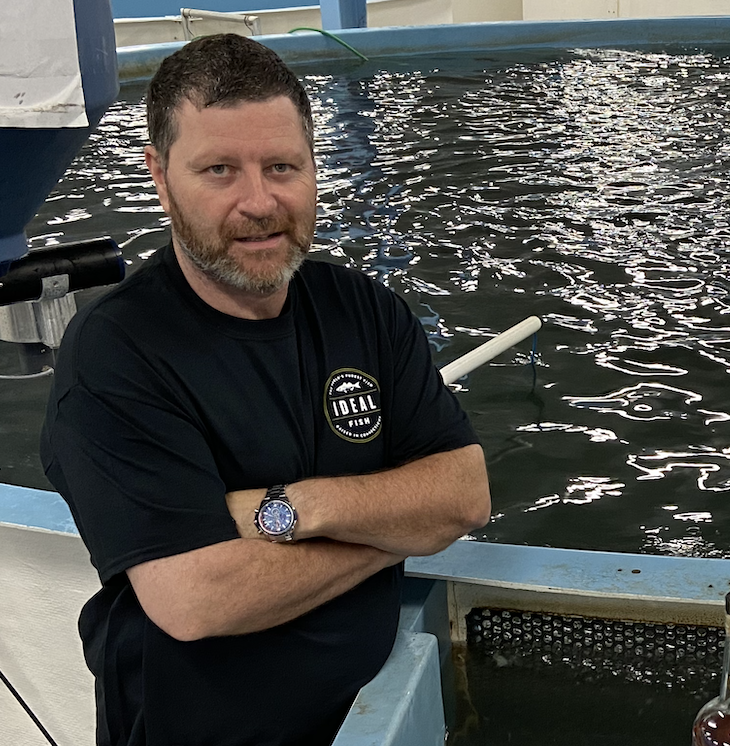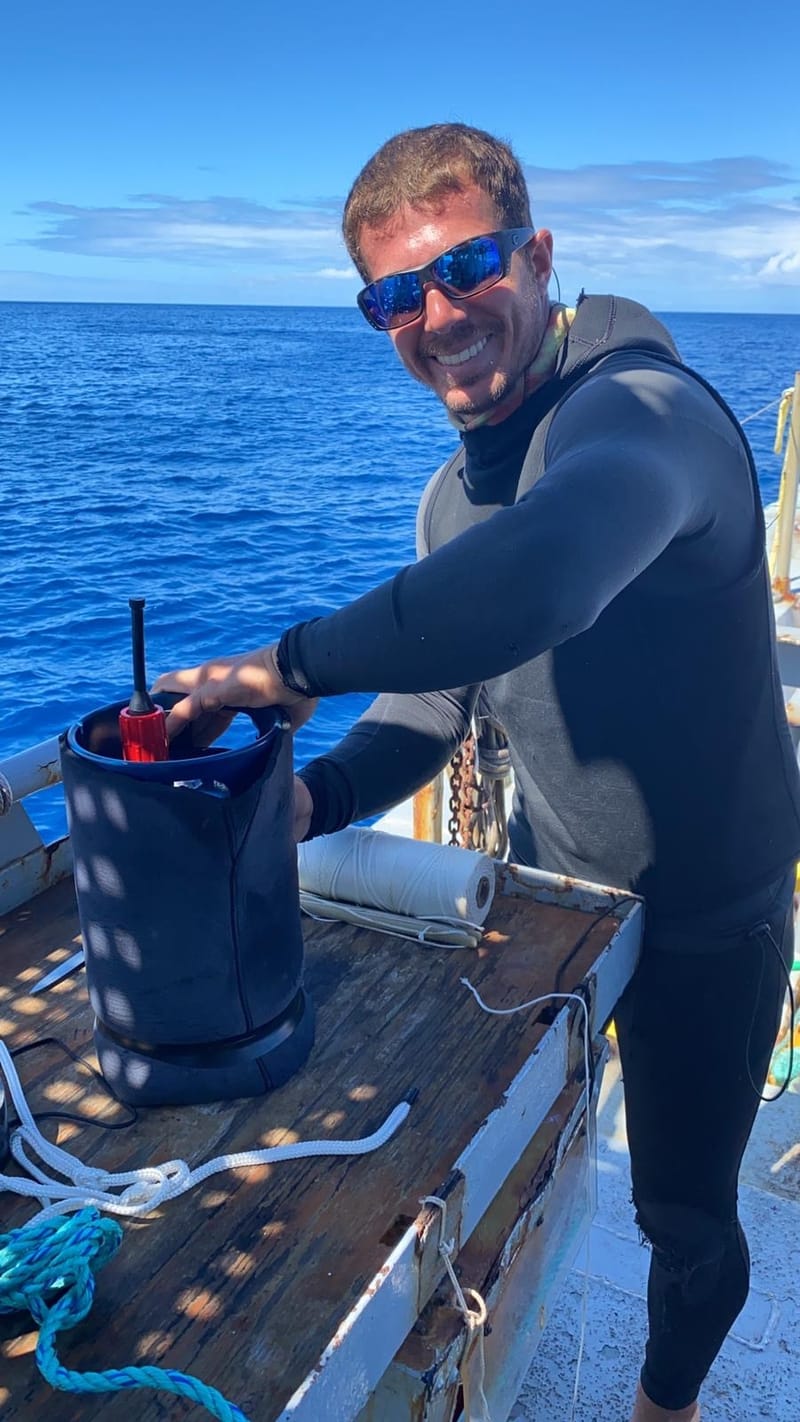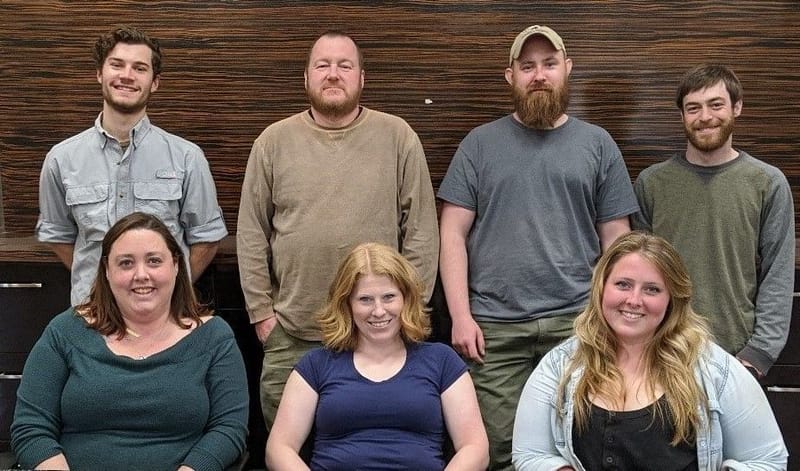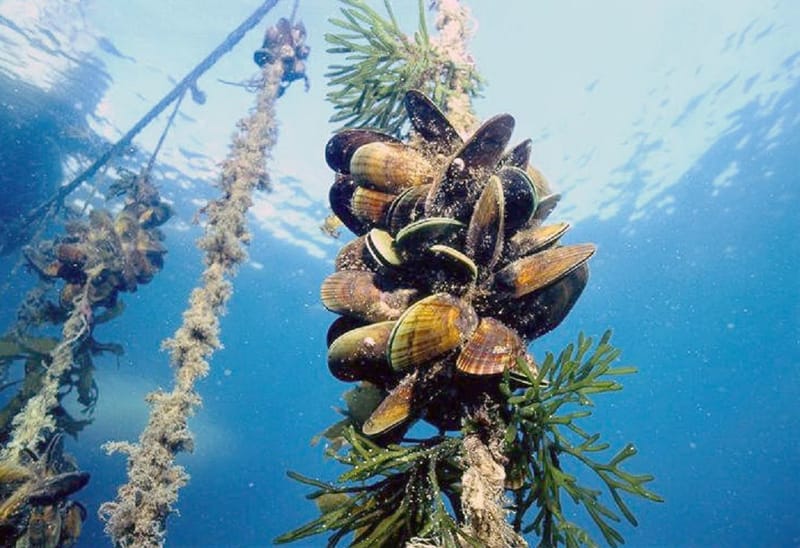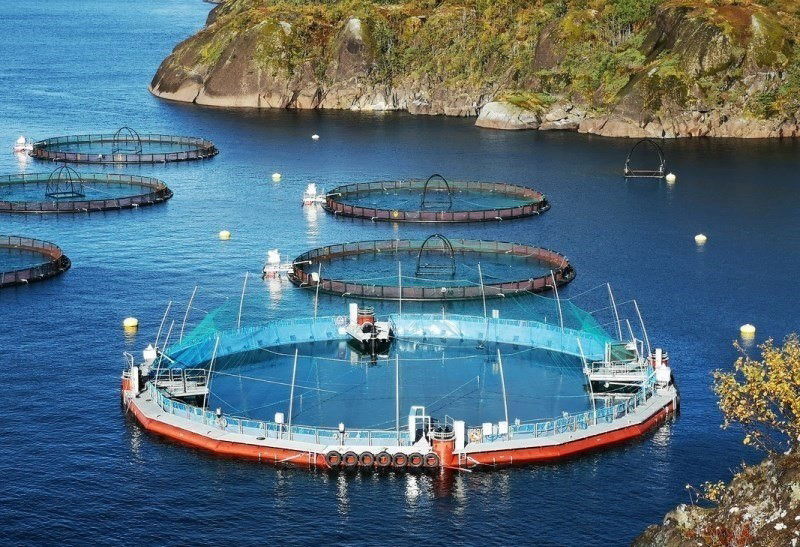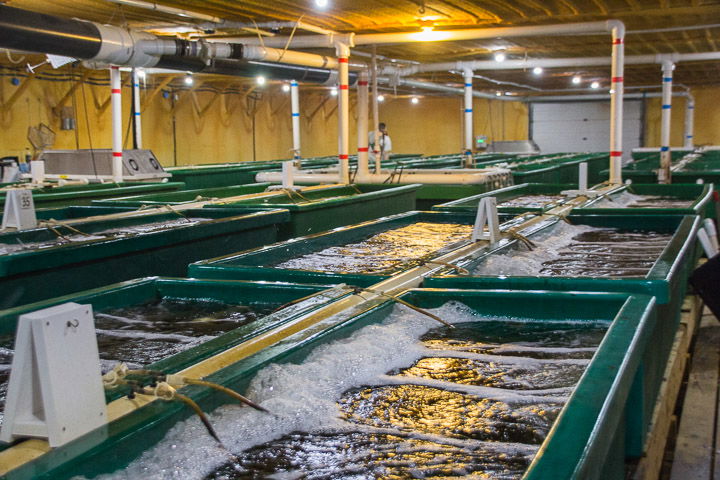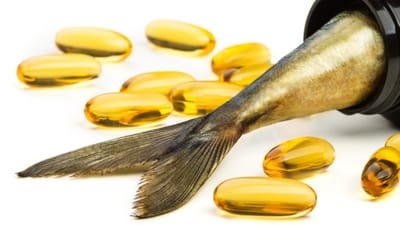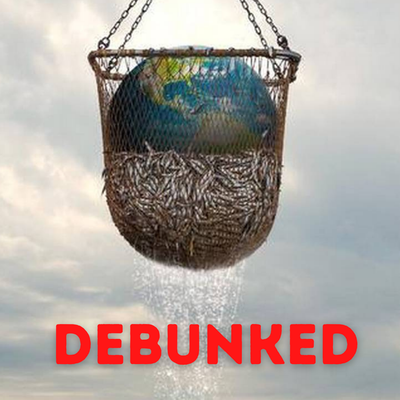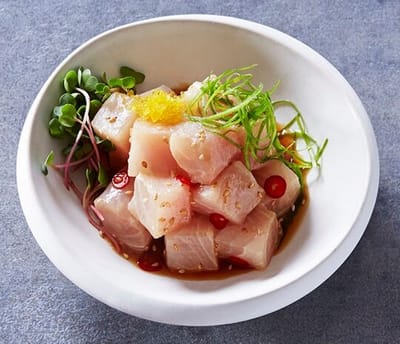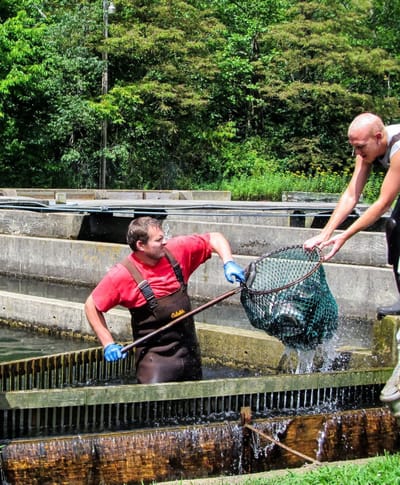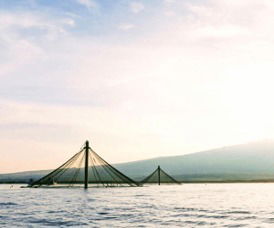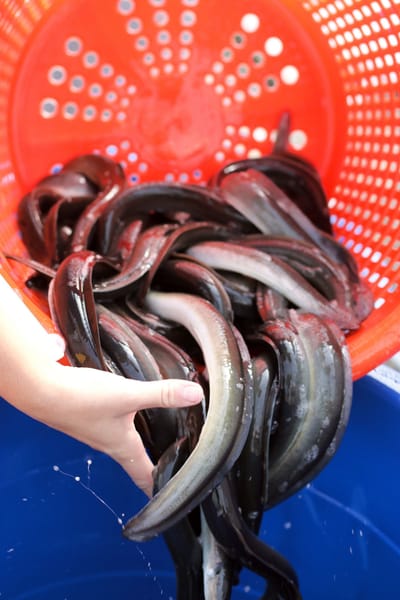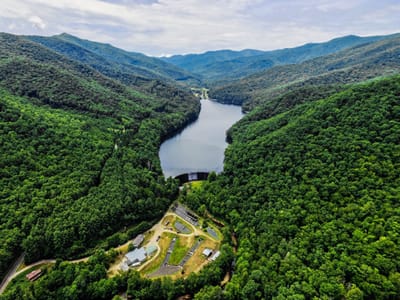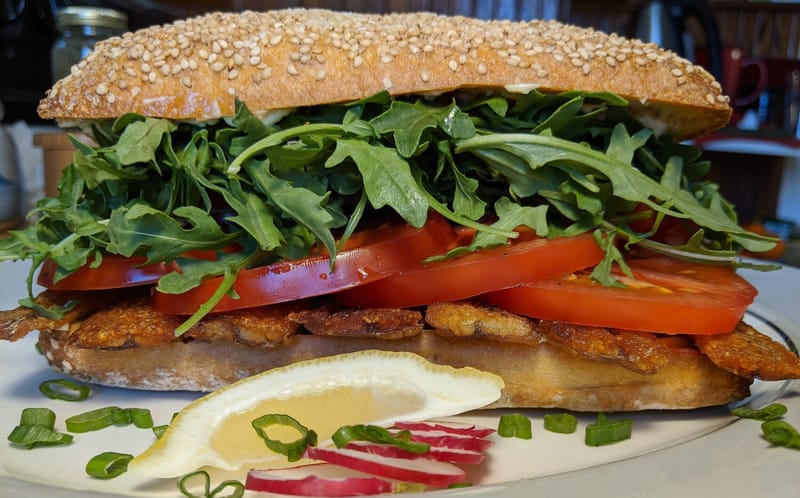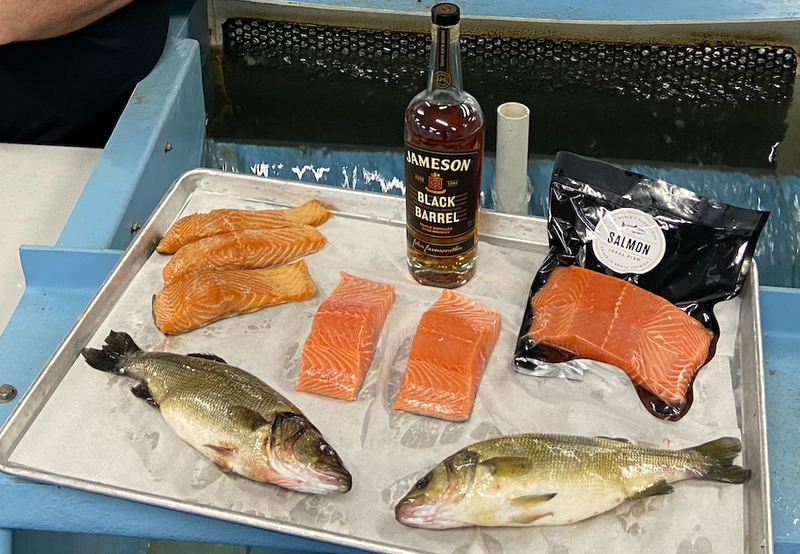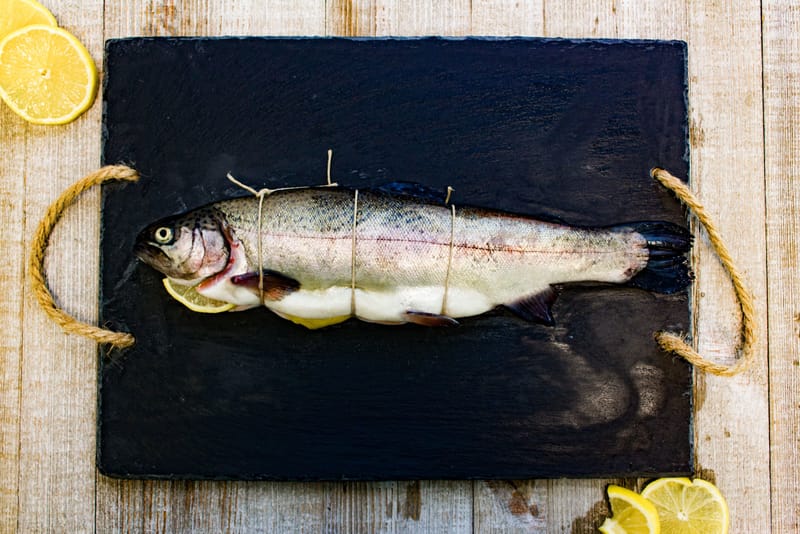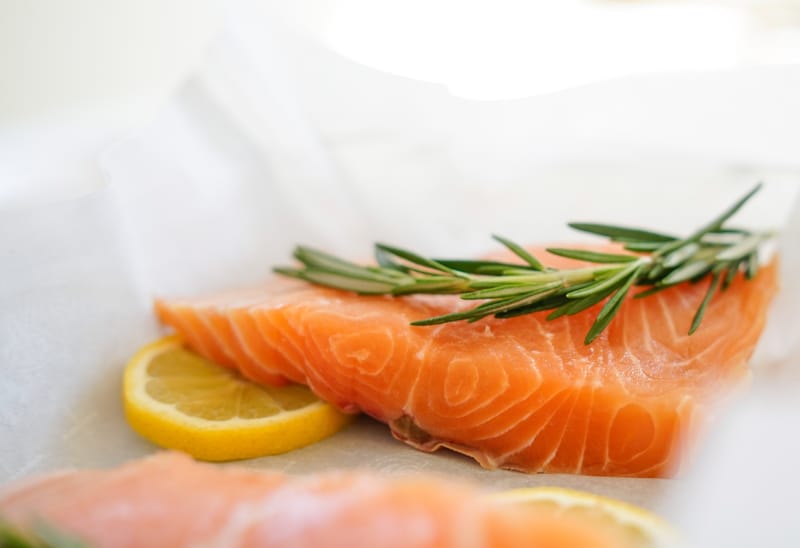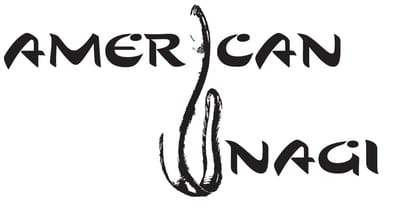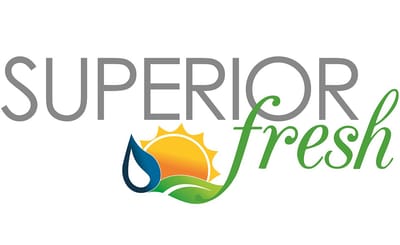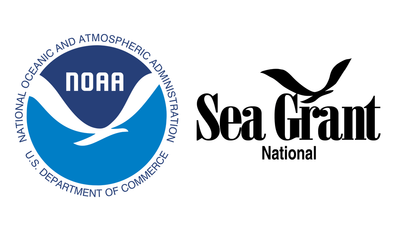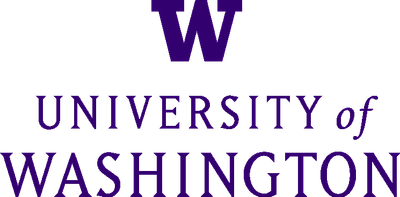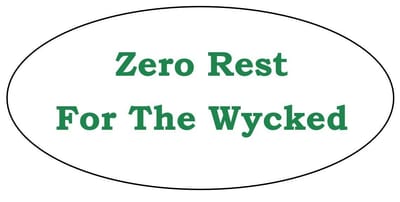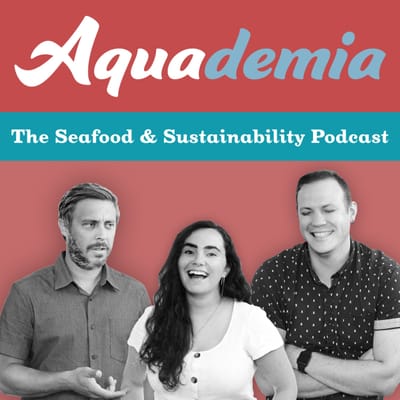Today’s Farmed Fish is a collaborative thought campaign among researchers and industry experts striving to show consumers responsible examples of US farmed fish, settle common aquaculture myths, and illustrate not all animal protein is created equal.
Discovering Sustainably Raised Seafood Starts Here
Meet Your Fish Farmer
With over 35 years of experience in the aquaculture industry, Joe McElwee at Ideal Fish highlights the sustainability of RAS farming, producing tasty Mediterranean Seabass otherwise known as branzino.
Read MoreWe caught up with owner Sara Rademaker’s whirlwind schedule to talk with her about her savvy unagi practices.
Read MoreWe got a minute of owner Wes Eason's time to talk about his homegrown rainbow trout practices and the pressing concerns among the aquaculture industry today.
Read MorePresident Brandon Gottsacker took the time to tell us about his cutting-edge aquaponics and land restoration practices in eastern Wisconsin.
Read MoreDavid tells us the difference between kanpachi and kampachi, and growing it at Blue Ocean Mariculture’s state-of-the-art facilities.
Read MoreCEO Phil Gibson sits down with us to share his vast industry knowledge and his cutting-edge technology for raising indoor coho.
Read MoreInsider Insights
Dr. Chris Anderson is a Professor of Fisheries Economics at the University of Washington and also the Research Director of TFF. For three consecutive years prior to the pandemic, he held blind tastings of farmed vs wild salmon in his graduate class. We sat down with him to discuss his findings, and the results might surprise you!
Read MoreWe spoke with NOAA Director of Aquaculture to discuss the direction, opportunity, and public concern of developing a stronger aquaculture industry in the US.
Read MoreTFF sat down with Jennifer Bushman to discuss how aquaculture done properly has the potential to really succeed in the US. Working with many industry folks she provided us with a wide array of information.
Read MoreWe spoke with the Executive Director at the Western Regional Aquaculture Center to learn more about aquaculture in the Pacific Northwest and how developments have improved over the years.
Read MoreJoin Our Community!
Read the stories behind best practices from ultra responsible American fish farmers!
Cover topics we research on environmental impacts, feed usage, fish escapement, and widespread advancements in aquaculture, and discover further resources! Find out how to cook sumptuous farmed fish recipes and where to buy sustainable product!
Top 5 Ways to Sustainably Farm Fish
Farming two or more species together is an ultra-responsible way to farm our oceans. From ancient China to modern day Canada, this practice show promise for the future.
Read MoreOffshore farms sited in deeper waters, where ocean currents flush away any possible contaminants from the farms are starting to become a realization in the US with the west coast leading the way. Hawaii and California are two great examples of this sustainable practice.
Read MoreThis novel form for fish farming coming out of Scandinavia combines the best techniques from a variety of other farm practices to culminate in what is arguably the most innovative responsible form of fish farming today.
Read MoreTaking fish farming out of the water and on to land, RAS systems provide year round responsible protein across the country in an almost 100% renewable way. The Midwest has exemplified how sustainable this practice can be with barramundi coming out of Iowa and salmon out of Indiana
Read MoreLike RAS, raceways also allow for fish farming to take place on land, with minimal environmental impact. Mitigating impacts of common concern like disease transfer and effluent pollution, this practice produces fresh fish across the US.
Read MoreFlash frozen is the new Fresh
What is flash freezing for seafood?

Flash freezing produces higher quality and tastier fillets!

Flash freezing lowers carbon emissions and food waste

Flash-frozen is both cheaper AND safer than fresh fish!

TFF Articles
We've all heard of fish oil before - but just how is it used in aquaculture and why is it so essential? Read more to find out how consumers can benefit from fish oil and explore sustainable alternatives.. like krill!
Read MoreA lack of research and misinformation caused an uproar in the marine world. So, just how inaccurate is Seaspiracy?
Read MoreWe touch on added dyes, antibiotic residues, and environmental contaminants like mercury and PCBs to conclude that today's farmed fish is still better than...
Read MoreWe consider three major environmental tradeoffs when you're choosing your animal protein for your meals and while you're shopping at the grocery store...
Read MoreWe explore the notable advancements in aquaculture over the past 30 years. Today’s farmed fish is a lot more comparable to other high-quality animal protein than...
Read MoreWe examine requirements, efficiency, and advancements in feed sources of farmed fish for a better understanding of today's...
Read MoreDespite escapement events having decreased 98% the past 15 years, we explore and better understand the risk of fish escapement...
Read MoreCommon Farming Methods
Recirculating aquaculture systems (RAS)
Wastewater is pumped through treatment systems that clean and re-filter circulated water before returning it to the fish tanks. These recirculating systems can be built on land, allowing farming to take place all across the country. Compared to other raceways, RAS aquaculture has less wastewater and overall water requirements. This type of farming also eliminates risks associated with environmental harm to ocean habitats. A wide variety of species grows well in these tanks such as arctic char, salmon, trout, bass, and sturgeon.
Open net pens
These pens are situated in coastal waters and allow fish to grow in an open ocean environment. Species such as salmon, trout, and tilapia are farmed using this method as it applies to both saltwater species as well as freshwater species. Nets pens are anchored to the bottom and allows for water to freely flow through them. Pens are typically constructed from welded steel pipes, heavy duty rubber hinges, and mesh/net screens.
Offshore cages
These cages differ from open-net pens, as they are submersible cages in deeper water farther off the coast. With stronger oceans currents the farther out you go, water is filtered out and diluted more easily than with open-net pens. Offshore cages are attached to the sea floor and to buoys on the water’s surface. Species such as kanpachi, cobia, sablefish, and bass do well in off-shore cages. These cages are typically stronger than open-net pens, and continually becoming more secure as newer technology develops.
Raceways
Sometimes referred to as “flow-through” systems, raceways can be inside or outside and are highly advantageous in allowing for easy fish monitoring and feeding. This system consists of long basins with continuous water flow to farm freshwater species like trout and tilapia. Incoming water is maintained at the appropriate temperature and salinity for the species being farmed. Raceways are most often constructed from concrete or pollster resin.
Polyculture (Integrated Multi-Trophic Aquaculture)
Click below for a short video!
Different from any other production method, this method combines finfish species, shellfish, and marine plants (seaweed and kelp) boosting the environmental and economic benefits of aquaculture. This farming method is similar to polyculture on terrestrial farms using co-cultivation of different species. The salmon effluent and food waste are able to be absorbed or extracted by mussels and the kelp is able to dissolve other waste products such as nitrogen and phosphorus.
Recommended Resources
 Photo courtesy of American UnagiAquaculture in the press:
Photo courtesy of American UnagiAquaculture in the press:
It’s Time to Be Honest about Seafood (Scientific American Observations May 2019)
5 keys to making sustainable aquaculture mainstream (Fish 2.0 Currents April 2019)
Hawaiian Kanpachi: Everything you need to know (Hawai'i Magazine June 2017)
Institutions/websites we recommend:
Aquaculture Stewardship Council
Sustainable Fisheries Partnership
Cool videos/media:
Wisconsin Foodie Show featuring Superior Fresh
Best Choice and Certified Farmed Fish
So, you’ve come to the conclusion that farmed fish can totally be sustainable, and you’re ready to go to the grocery store to purchase some for dinner – now comes the daunting task of trying to remember which farming methods are better than others, which species have minimal environmental impact, and which sellers you should be buying from! With great resources from trusted organizations, this information is accessible – to make it even easier for you, we’ve compiled a list of the most sustainably farmed fish species based on Monterey Bay Aquarium’s guidelines. Next time you’re at the grocery store, just pull up this table and have your pick!
Setting the bar for sustainability, Monterey Bay Aquarium considers 10 different criteria and provides each species a ranking on a scale of 0-10 (0 is poor quality and 10 is high quality). You can check out their full list of farmed and wild fish recommendations worldwide here but we’ve compiled a list of US farmed fin fish species to make it easy for you!
| Species | Method | Farm |
| Arctic Char | Raceway | Cascade Aqua Farms |
| Sunshine Bass | Pond | Ekstrom Aquaculture, Nature's Catch |
| Sunshine Bass | Tank | Colorado Catch, Kent Sea Tech |
| Channel Catfish | Pond | America's Catch, Carolina Classics, Haring Catfish, Harvest Select |
| Red Drum | Pond | Ekstrom Aquaculture |
| Siberian Sturgeon | RAS | Health Earth, Sturgeon Aqua Farms |
| White Sturgeon | Raceway | Fish Breeders of Idaho, |
| White Sturgeon | Tank | Sterling Caviar, Tsar Nicoulai |
| Rainbow Trout | Raceway | Blue Stream Aquaculture, Clear Spring Foods, E&J Fish Farm, Liley Fisheries, Sunburst Trout |
| Rainbow Trout | Pond | Jeramiah’s Bullfrog Fish Farm, Mt Lassen Trout, Plymouth Springs Fish Co |
| Rainbow Trout | Net Pen | Manna Fish Farms |
| Rainbow Trout | RAS | Superior Fresh |
Read the stories of American fish farmers
Deep Dive FAQ: Kanpachi/Kampachi
Deep Dive FAQ: Branzino
Editor's Pick: Local Seafood
OUR TOP 3 LOCAL SUSTAINABLE SEAFOOD SOURCES FOR THE (COVID) HOLIDAYS

Feature photo courtesy of Superior Fresh
Spoiler Alert: None of these suppliers offer farm raised fish! Being local to the Pacific Northwest, we haven’t historically have a lot of love for farmed fish. However, we believe with time and thought leadership, even local consumers will support the notion of responsible aquaculture and demand clear legislation that outlines proposed US practices. If we demand more from our food systems, both wild and farmed, the industry will answer that call. High tides lift all boats.
First Place: Lummi Island Wild Co-op
Truly local to the Seattle area, Lummi Island Wild Co-op is a small organization with strong and long-standing native tribe connections. They harvest Washington salmon and ikura (salmon roe), and feature a variety of regional and Alaskan sourced seafood, all flash frozen at the peak of freshness. Lummi is made up of a few white salmon fishermen who also purchase salmon from the Upper Skagit River Tribe, one of the few direct-to-consumer enterprises in the area that provides mainstream access to a high-end commercial market for native fishermen. I've personally witnessed the tribe fishing Baker River Sockeye in tiny river skiffs with extremely well-regulated 7 minute gillnet sets. Bottom line: for truly local, responsible, and well-handled seafood, 110% buy from these fellas.Second Place: Tre-Fin Day Boat Seafood
Based in Ilwaco, WA, the Community Supported Fishery (CSF) Tre-Fin Day Boat Seafood is made up of a few Washington and Oregon coast albacore fishermen who bring back their daily catch and still hand-fillet to sell to households. They now offer black cod, halibut, lingcod, rockfish, and petrale sole in their subscription boxes, which can be picked up in Vancouver, Ilwaco, or Gig Harbor, WA. Home delivery offered around the Portland area. These are some of the hardest working fishermen with the upmost integrity I've met who truly want to bring people positive experiences with their seafood.Third Place: Desire Fish Company
You can’t get much more locally supportive of a fisher family than Desire Fish Company. Salmon that's caught in Alaska, pressure-bled on board, and processed and sold in Bellingham, WA. Relatively low tech, keep an eye on their Facebook page for up-to-date public communication. Their website isn’t the most modern but has the information. Buy in person at Squalicum Harbor in Bellingham Sat/Sun 10-5pm. Their usual spot is gate 7. They leave for the Alaska salmon season June 1, and return in the fall. The Bellingham Community Food Co-ops both carry their sockeye in their seafood departments and grab-and-go sections. The Cordata Co-op carries their coho as well. This is just a really nice fishing couple getting on into their golden years and trying to do right by their environment and their community.Runner Up #1: Alaska Select Seafoods
The side hustle of a Bristol Bay sockeye fisherman, Captain Nick Lee makes twice-a-year deliveries to Seattle by the case. Alaska Select Seafood offers a variety of Alaskan species such as salmon, black cod, halibut, Pacific cod, snow crab, and spot prawn. Sign up for their mailing list to receive info for fall and spring pickup. I've known Nick a few years as a customer turned business partner and back to customer again. He is also one of those fishermen trying to bring good people good fish and bust up seafood myths along the way.Runner Up #2: Vital Choice Seafoods
Based outside of Bellingham WA, Vital Choice Seafoods focuses on sourcing extremely well and educating their consumers with great transparent information about their sourcing and post-harvest practices listed within each product description. While they source outside of local fisheries, their strict criteria provide confidence in some of the trickier seafoods, like their handline yellowfin tuna from Indonesia or their wild artisan blue shrimp from Mexico. Also a good place for fun fancy items like smoked black cod. With frozen home delivery service, the only downside is the price. You do have the option to pick up at their HQ in Ferndale, WA. *The link above gets you 5% discount and free shipping.
Send us your favorite farmed fish recipes!
Our Mission

Connecting consumers with sustainably farmed fish.
 Photo courtesy of Blue Ocean Mariculture
Photo courtesy of Blue Ocean Mariculture
Find product you can trust!
Several responsible examples of sustainably farmed fish exist right here within the US.
Asking for local US-raised farmed fish is an excellent starting point to experiencing the clean fresh flavor of sustainably farmed fish.
Consider supporting sustainable aquaculture legislation in your state to bring good clean product as local as possible.
See Where To Buy and ask for the following brands at your local grocer.
This campaign is funded by NOAA Sea Grant National Aquaculture Initiative grant R/SFA/N-8, led by the School of Aquatic and Fishery Sciences at the University of Washington. The research team has engaged select US-based farmed fish producers who have made in-kind contributions in the form of their time answering interview questions about their practices, and providing photo resources credited throughout the website.
Our Team
...and be sure to Meet Your Fish Farmer under the Stories tab!
Our Partners
Aquademia Podcast
Today's Farmed Fish
Follow us on Social Media!
Contact Us
- Seattle, WA, USA
- Request a press kit, submit a recipe or photo, arrange an interview. We look forward to hearing from you.
